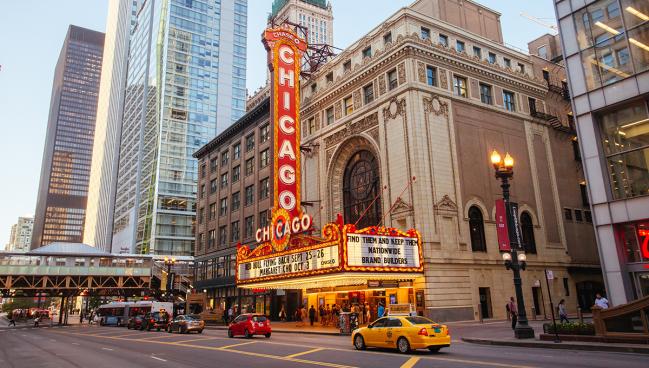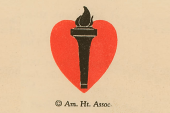One Hundred Years and Beyond: What's Going to Be Hot at AHA 2024
The 2024 conference has 28 late-breakers plus plenty of basic and population science. More than anything, it’s a celebration.

The American Heart Association (AHA) is days away from capping its centennial celebrations by bringing its Scientific Sessions back to Chicago, IL, the city where the organization was first founded a century ago. In addition to the regular mix of basic, clinical, and population science programming as well as a slate of 28 late-breaking clinical science presentations, this year’s meeting also is set to look back at how far cardiology care has come and where it needs to go next.
“You’re going to see a celebration that spans the whole weekend and through Monday,” AHA President Keith Churchwell, MD, told host Roxana Mehran, MD (Icahn School of Medicine at Mount Sinai, New York, NY), in a preview to the upcoming meeting on the Rox Heart Radio podcast. The idea, he said, is “not only to celebrate [but] also to be thinking about what the second century for AHA and also cardiovascular medicine will look like.”
That “celebratory feeling,” should be palpable to everyone who attends, said AHA Program Chair Amit Khera, MD (UT Southwestern Medical Center, Dallas, TX). “Every meeting has to have a personality and a tone, and this one is so special—I think you’ll feel it, that hundredth year,” he said. “You’re going to see this weaved throughout this 100-year experience, on top of some great programming, as always.”
That programming is organized by subspecialty track: four in the basic science stream, 17 in clinical science, and 10 under the umbrella of population science. Late-breaking basic science presentations are grouped in two oral sessions and one poster session over the weekend, while the late-breaking clinical science presentations span eight sessions across all three days of the meeting.
Friday offers a “presessions symposia” with early career and global content, while a handful of sessions throughout the meeting are dedicated to US clinical practice guidelines, offering a deep dive into recommendations and topics covered in recent AHA documents and statements.
Clinical Late Breakers
The first of eight late-breaking science (LBS) sessions begins early Saturday morning with an opening address by Valentin Fuster, MD, PhD (Icahn School of Medicine at Mount Sinai): “Celebrating a Century of Cardiovascular Science.” Fuster’s lecture will be followed by BPROAD, a 12,700-patient Chinese trial testing intensive BP control in diabetic patients, and SUMMIT, the highly anticipated randomized trial of tirzepatide injection (Zepbound; Eli Lilly) versus placebo in 731 patients with heart failure with preserved ejection fraction and obesity. The third trial of the opening showcase is a CRISPR study looking at gene editing using NTLA-2001 (Intellia Therapeutics) for patients with transthyretin amyloidosis.
Saturday’s second LBS is focused on heart rhythm disorders and includes VANISH2, a 416-patient trial comparing catheter ablation and anticoagulation in patients with ventricular tachycardia; OPTION comparing left atrial appendage occlusion and anticoagulation in 1,600 atrial fibrillation (AF) patients previously treated with catheter ablation; and BRAIN AF, pitting rivaroxaban against placebo in 1,200 younger patients with AF, with the aim of preventing cognitive defects and dementia.
LBS 3 is dedicated to automated strategies and artificial intelligence tools for improving heart failure diagnosis and care, with a total of three different trials employing AI to read and optimize echocardiography.
LBS 4, entitled “From Intervention to Prevention,” turns the spotlight to CV surgery trials. These include two separate GLORIOUS presentations in patients undergoing CABG and aortic valve repair (AVR): the first looks at restrictive versus liberal oxygenation, and the second looks at the effects of a GLP-1 agonist—both with an eye to improving surgical outcomes. The third, ENBALV, is testing the safety and efficacy of edoxaban early after surgical AVR, while the fourth is the spironolactone versus placebo arm of CLEAR SYNERGY (OASIS 9) in acute myocardial infarction—the colchicine results from this trial were released at the TCT 2024 meeting last month.
Global initiatives and prevention are the focus of LBS 5, with TOPSPIN, testing an antihypertensive polypill trial in India, and NUDGE-FLU, combining three randomized trials (and over 2 million subjects) using electronic nudges to increase influenza vaccination rates post-MI. The third trial, ZODIAC, explores the use of a novel decision support system to optimize use of lipid-lowering therapies after acute MI while the fourth, My Heart Your Heart (MHYH), compares outcomes among patients treated with new versus reconditioned pacemakers in low- and middle-income countries.
Heart failure pharmacotherapy trials are grouped in LBS 6, including ENDEAVOR, with mitiperstat (AstraZeneca), an irreversible inhibitor of myeloperoxidase, and SARAH, testing sacubitril/valsartan (Novartis) to prevent cardiotoxicity in the setting of anthracycline chemotherapy. The third trial features a novel bumetanide nasal spray compared with intravenous and oral diuretics in heart failure, and the fourth, REALIZE-K, explores the use of sodium zirconium cyclosilicate to manage hyperkalemia in patients who have heart failure with reduced ejection and are taking spironolactone.
Two ablation trials—PROMPT-AF and CRRF-PeAF—open LBS 7. The first compares pulmonary vein isolation (PVI) alone to PVI plus a linear ablation approach for persistent AF. The second is a randomized comparison of cryoballoon and radiofrequency ablation. Two additional trials in this group address the potential for combining therapeutic approaches with risk factor management to improve AF prevention.
Last but not least, lipids see the limelight in LBS 8, with two phase II trials of agents targeting Lp(a): ALPACAR-360 with zerlasiran (Silence Therapeutics) and KRAKEN with muvalaplin (Eli Lilly). Top-line results for ALPACAR-360, released this past summer, showed highly significant reductions from baseline in Lp(a) with zerlasiran compared to placebo at the end of the 48-week treatment and dosing period. The third and final trial in this set, BROOKLYN, revisits the CETP inhibitor obicetrapib (NewAmsterdam Pharma) in patients with heterozygous familial hypercholesterolemia.
Celebration, Reflection, and Connection
Outside of the late breakers, Khera stressed the breadth and depth of other oral and poster sessions, including the featured science presentations scheduled throughout the 3-day meeting. The Heart Hub, he predicted, will be the meeting’s hot spot. That’s where people will find the fan-favorite puppy-petting zone as well as the learning studios, case-based presentations, digital and paper posters, and innovation pavilion. This is the place for networking and conversations, Khera said, not a place to merely charge your phone and relax.
Churchwell will give the 2024 Lewis A. Conner Presidential Lecture Sunday afternoon highlighting not only the progress made in combatting cardiovascular disease over the last 10 decades, but also the new and persistent challenges, including health and access inequities.
Both men characterized this year’s meeting as a unique chance for people across scientific and clinical disciplines to come together and find inspiration in the accomplishments of years past to tackle the hurdles ahead.
“We should all just collectively [applaud] what an amazing 100 years for medicine. I think you’ll feel that, and I think we’ll be so proud,” Khera said. “We’re also really trying to inspire people about, what’s the next 100 years? I really hope that people leave with that celebration feeling.”
Shelley Wood was the Editor-in-Chief of TCTMD and the Editorial Director at the Cardiovascular Research Foundation (CRF) from October 2015…
Read Full Bio


Comments